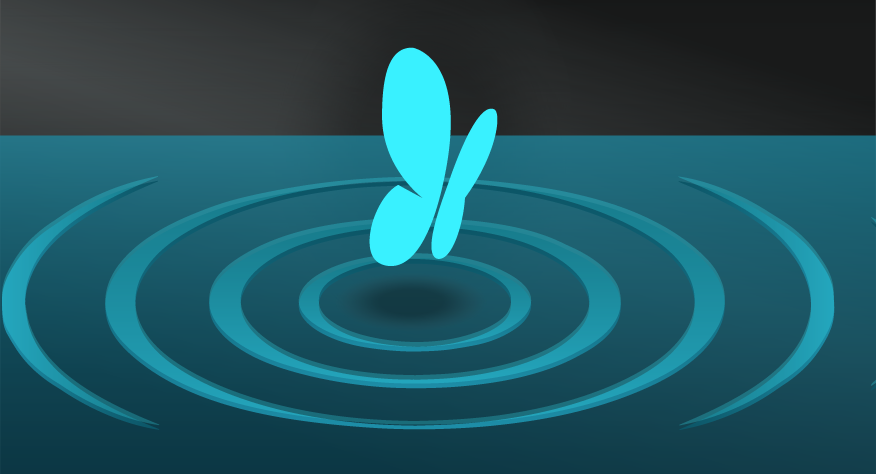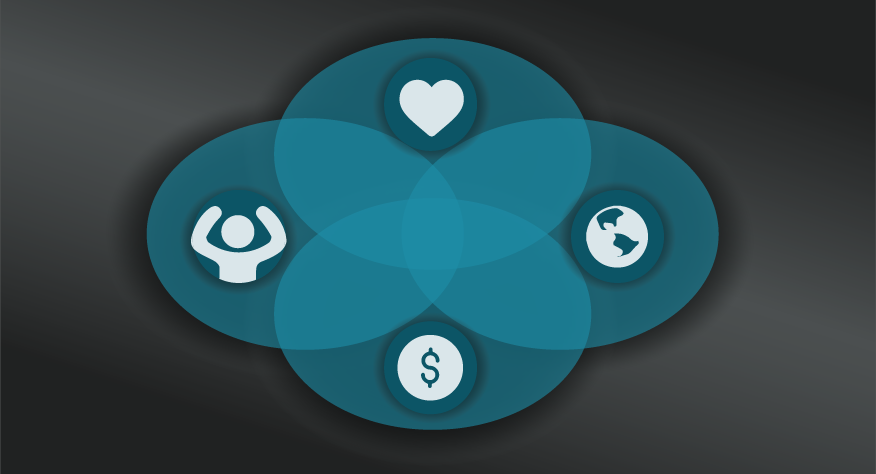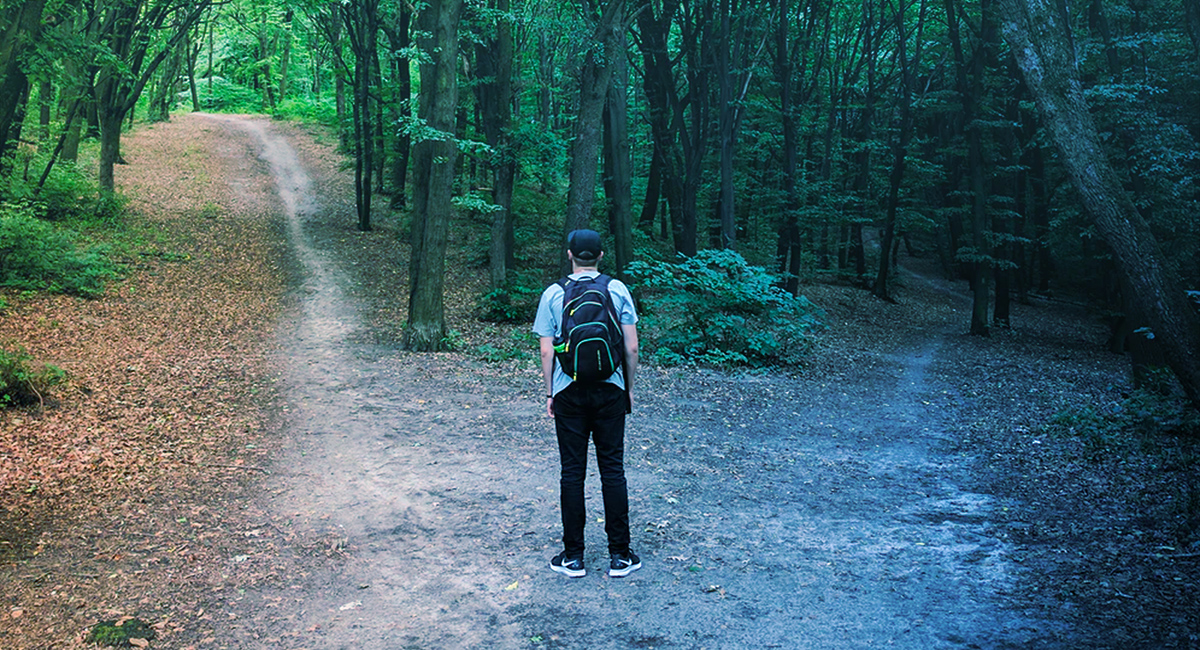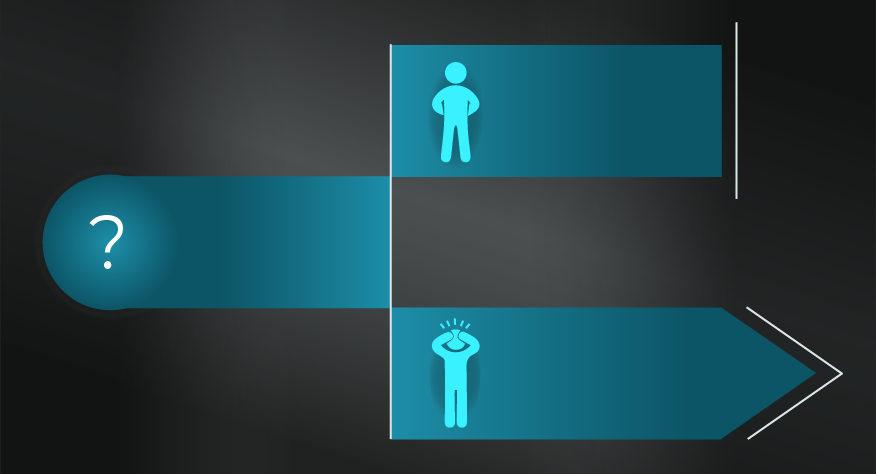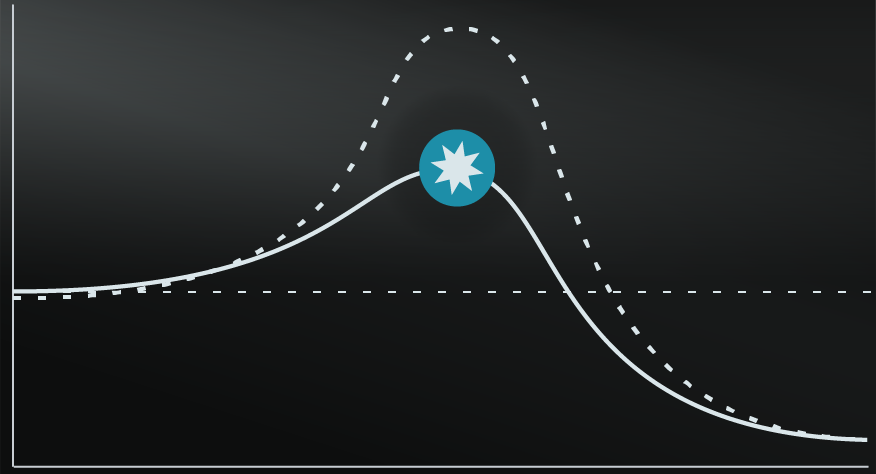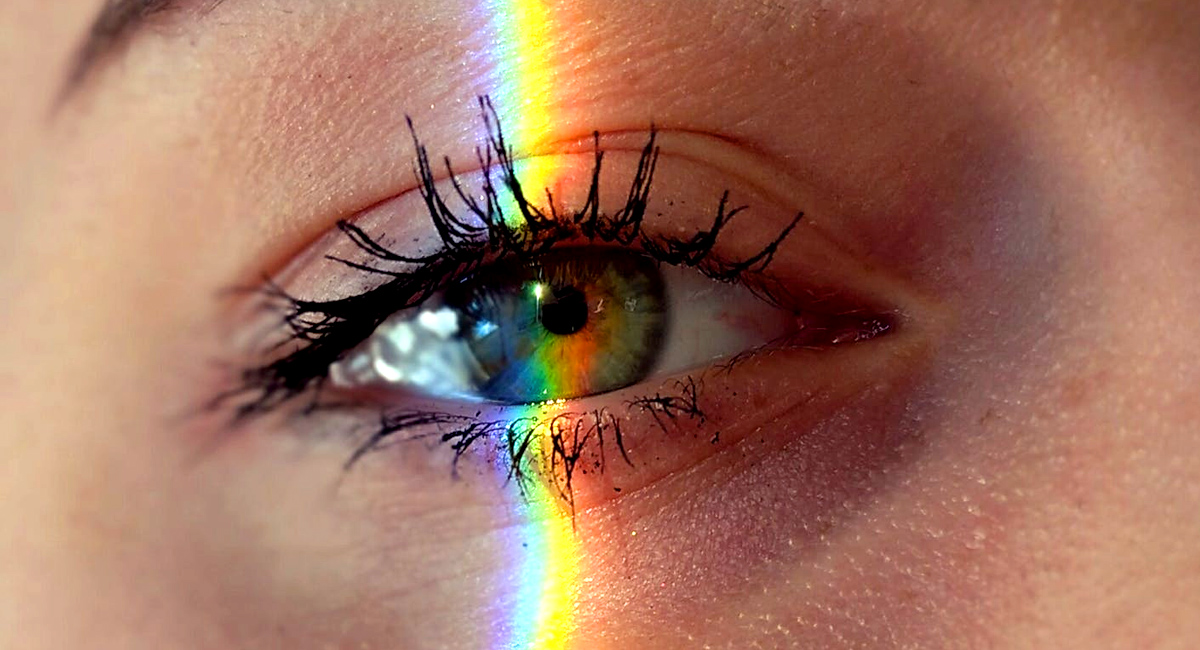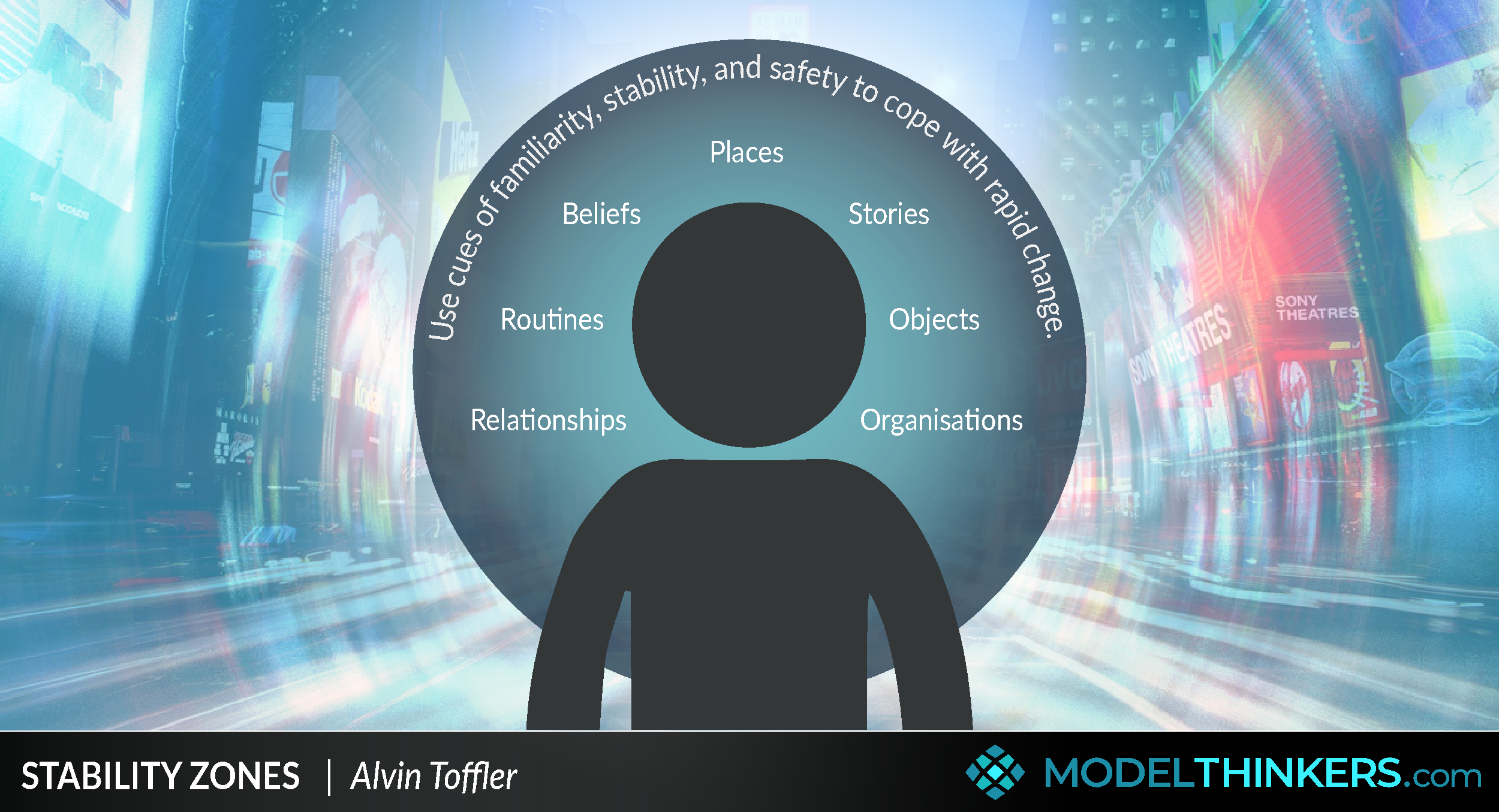
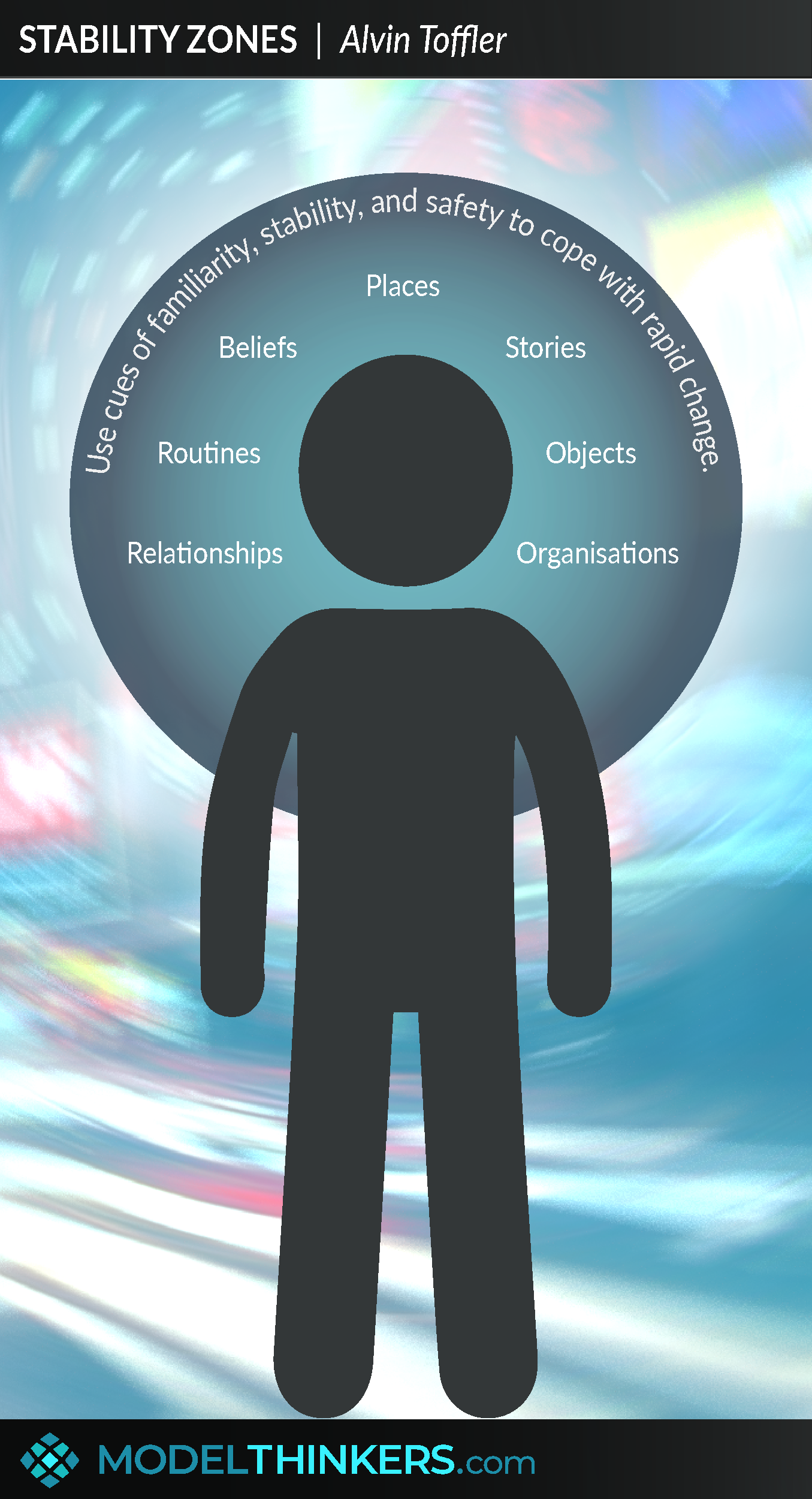
 0 saved
0 saved
 20.1K views
20.1K views








“The future always comes too fast and in the wrong order.” - Alvin Toffler.
The publication of Alvin Toffler's Future Shock resonated with countless people facing uncertain and changing futures. Published over five decades ago, his description of stress and overwhelm born from accelerated change is only more relevant today. Fortunately, Toffler also suggested some coping mechanisms, and this model is chief among them.
Toffler’s Stability Zones are cues that provide you with a sense of familiarity, stability, and safety – they help to anchor you and better cope with rapid change and disruption elsewhere in your life.
FUTURE SHOCK.
Alvin Toffler described Future Shock as “the shattering stress and disorientation that we induce in individuals by subjecting them to too much change in too short a time.”
He painted a picture of growing social alienation as people collided with the future, explaining: “just as the body cracks under the strain of environmental overstimulation, the ‘mind’ and its decision processes behave erratically when overloaded.”
However, Toffler was not anti-change. He viewed change as inevitable, pointing out that “change is not merely necessary to life — it is life.”
STABILITY ZONES.
One of Toffler's recommended coping mechanisms was to develop ‘Personal Stability Zones.’ He explained: “If we opt for rapid change in certain sectors of life, we can consciously attempt to build stability zones elsewhere.”
Toffler cited several examples but didn’t break the concept down systematically. Thus, we've taken the liberty of listing potential cues for Stability Zones:
-
Relationships: these are the people that help to accept and ground you. They often will have a shared worldview or history with you, and help provide you with a sense of belonging. It's your sibling, parent, or life partner/ friend.
-
Beliefs: ranging from religious, political, or ideological views, these deeply held mental models will intersect with your core identity and reflect deeply held values.
-
Places: often your home, or a room in your home, but it might be any environment, they trigger a sense of certainty through reassuring familiarity.
-
Objects: a piece of jewelry, particular clothes, food, or a childhood toy. These objects will often link you to a reassuring time or experience where you felt belonging and safety.
-
Organisations: these are your clubs, affiliations, or formal ‘tribes’. Ranging from social groups to ones based on shared work or belief systems.
-
Routines: the predictable rituals that you build into your day. From the habit of enjoying your first coffee before you start work each day, a religious ritual such as saying a prayer before eating, or even petting a cat when you get home after a chaotic day.
-
Stories: particular characters, genres, specific movies, or replaying certain memories might provide the stability you’re looking for. Letting you immerse yourself into another world, even if just for a moment, and feel the calm predictability of familiar narratives.
In practice, many of the above elements will combine to create a Stability Zone that works for you. For example, having a regular coffee with a friend in a particular cafe (routine/ relationship/ place); the close personal relationships you have within a club (relationships/ organisation); or the rituals that are part of a religion (routine/ beliefs). It’s also worth warning that, somewhat ironically, Stability Zones will change over time — though hopefully at a rate that feels comfortable.
View the Actionable Takeaways below to see how to incorporate Toffler's ‘time and emotion forecast’ and the idea of 'halfway houses' with your application of Stability Zones.
IN YOUR LATTICEWORK.
The rapid change behind Future Shock can be better understood in the context of Moore’s Law and the disruptive nature of technological advancement. Information overwhelm can be viewed through the frame of Fast and Slow Thinking and models such as the Paradox of Choice.
You might establish Stability Zone reminders or prompts to help you and/or others by using Nudges and the EAST Framework, as well as the Habit Loop to embed routines that help you cope with the stress of change.
Finally, leverage Temporal Landmarks to create a natural division between the stress of your day and the entry point into your Stability Zone.




-
Use a ‘Time and Emotion forecast’ to predict and prepare for change.
Toffler recommends thinking ahead about likely changes which might be as simple as thinking about becoming older and having your children grow up and move out. He suggests that you track events with a ‘Time and Emotion forecast’, which involves assessing the percentage of time and emotional energy invested in important aspects of life, and how this might change over time. This will inform changes of values based on your time and energy investment and become a map of major internal change.
-
Identify your current Stability Zones.
Where do you feel safe and supported or go to de-stress? This might be a physical place but, as described in the Overview above, is more likely to be an emotional cue from a number of potential inputs. Make a list of such cues that helped you in the last month.
-
Brainstorm a list of potential new or expanded Stability Zones.
Build on your existing Stability Zones. Ask yourself about positive experiences in the past, and what might cue that feeling in the future. Also, consider possible variations of existing Stability Zones might expand your options.
-
Schedule time in your Stability Zones.
Don’t leave it to chance — book them in, actually schedule your Stability Zones into your calendar. Ensure that you have a balance of small daily visits to your Stability Zones, combined with less frequent ‘bigger recharges.’
-
Identify areas of intense change and plan accordingly.
Map out periods where parts of your life or work will experience rapid change and brainstorm how you might incorporate more and regular access to Stability Zones through those periods.
-
Use halfway houses.
Toffler pointed to the idea of prison halfway houses as important bridges between the current state and a radically different future state. He suggested the conscious creation of similar staged transitions in other aspects of major transformation.
-
Coach others to uncover and access their Stability Zones.
If you’re supporting someone through a period of major change, present this model to them and help them identify and regularly access their own Stability Zones. It can be applied to individuals, but also as part of large-scale organisational change.
Some dispute the degree to which Toffler’s view of Future Shock has come to be. Writing in Forbes, Shel Israel argued that Toffler overstated the social alienation impact of information flows, stating that, “we are not isolated by [more information]. And when the information overloads us, most people are still wise enough to use the power of the 'Off' button to gain some peace, or perhaps they take a beach walk or tend their gardens.”
That said, Israel seems to be supporting the use of Stability Zones, even in his criticism.
Perhaps a bigger criticism of this model is that it is self-evident and obvious. As intuitive as it is, we'd argue that it still benefits from being consciously named and highlighted as a go-to approach through the pressures of change. So yes, it's reasonably simple, but we could all benefit from using such simple things more.
Stability Zones in moments of Rupture.
One of the examples Toffler gave in Future Shock was how people can better navigate intense personal change by isolating the change as much as possible.
He explained: “A divorce, perhaps, should not be too closely followed by a job transfer. Since the birth of a child alters all the human ties within a family, it ought not, perhaps, be followed too closely by a relocation which causes tremendous turnover in human ties outside the family. The recent widow should not, perhaps, rush to sell her house.”
d
This model was introduced in Alvin Toffler’s classic 1970 book Future Shock, the first in a trilogy of best sellers. He completed his trilogy, adding a book each decade, with the publication of Third Wave in 1980 and Powershift in 1990.
Before his death in 2016, Toffler acknowledged the massive contribution of his longtime wife Heidi Toffler, who died in 2019, as his previously unrecognised co-author.
The book spawned from an article entitled ‘The Future as a Way of Life’ in Horizon Magazine’s 1965 issue, and argued that the world was transforming from an industrial society to a ‘super-industrial society.’ It was an international bestseller soon after its publication and remains in print today with millions of sales and translations into over twenty languages.
Read Future Shock online for free via this Internet Archive site. You can also view a slightly more gloomy take on the book, via this 1972 Future Shock documentary, which was narrated by Orson Welles.
 My Notes
My Notes
Oops, That’s Members’ Only!
Fortunately, it only costs US$5/month to Join ModelThinkers and access everything so that you can rapidly discover, learn, and apply the world’s most powerful ideas.
ModelThinkers membership at a glance:






“Yeah, we hate pop ups too. But we wanted to let you know that, with ModelThinkers, we’re making it easier for you to adapt, innovate and create value. We hope you’ll join us and the growing community of ModelThinkers today.”















